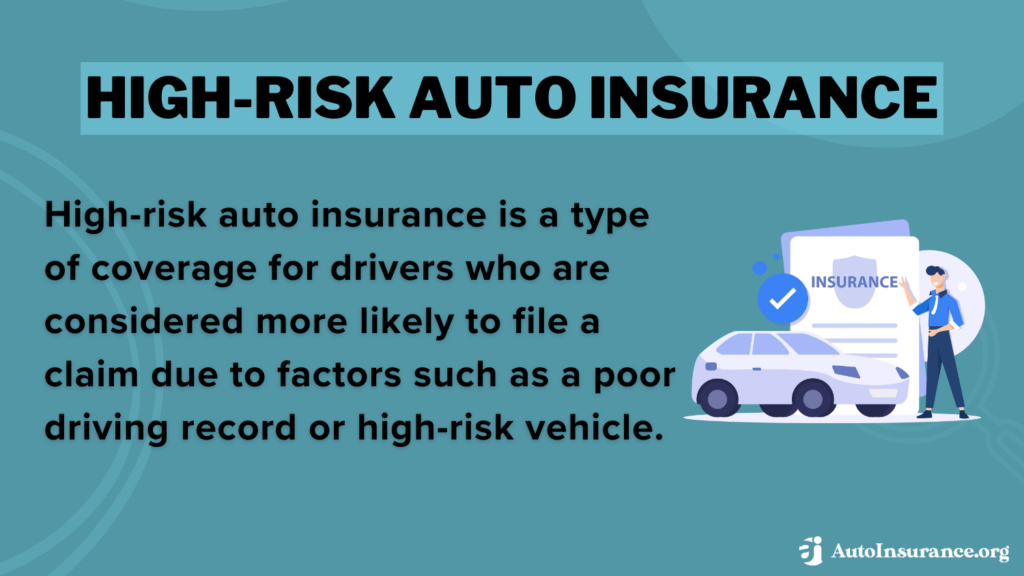High‑risk auto insurance might sound intimidating—but it’s a lifeline for drivers who’ve faced serious violations, accidents, or/compare/car-insurance financial hurdles. In 2025, with premiums skyrocketing and insurers tightening eligibility, understanding what it takes to get (or stay off) a high-risk plan could save you thousands—or even your ability to drive legally.
Here are seven eye‑opening truths every high‑risk driver should know.

1. Who Gets Labeled “High‑Risk”—and Why It Matters
You may be branded high-risk if you’ve:
- Had an at-fault accident, DUI/DWI, or multiple speeding tickets Investopedia+5Insurance.com+5Dairyland Insurance+5CNBC+1Experian+1
- Been uninsured or had policy lapses (even once) Compare the MarketInsurance.com
- Driven a high-performance, modified, or frequently stolen vehicle Compare the Market+1Progressive+1
- Been a teen or newbie driver arXiv+15Car and Driver+15Verdant Insurance Home Page+15
- Accumulated points, convictions, or poor credit Car and Driver+8Compare the Market+8CNBC+8
Insurers categorize such drivers as high-risk because, statistically, they file more claims—leading to higher premiums or outright denial from standard insurers.
2. High‑Risk Doesn’t Mean No Insurance—But It Costs
High-risk auto insurance, a form of nonstandard coverage, is available—but come with higher costs:
- On average, expect to pay 25% more than low-risk drivers arXiv+12The General+12Investopedia+12
- A DUI? Premiums can surge over 70%—from roughly $2,700 to over $5,200 annually CNBC+1Kiplinger+1
- Teens or bad credit? Rates may reach $5,000–$9,000+ per year CNBCMoneyLion
Still, obtaining coverage is better than none—some states require participation in assigned-risk pools with regulated but steeply priced rates Experian+1Wikipedia+1.
3. Typical High‑Risk Driver Profiles
Here are the main categories labeled as high risk:
- Teens & New Drivers: Inexperienced drivers aged 16–25.
- Drivers with Violations: Speeding, DUIs, reckless driving.
- Accident-Prone Individuals: Multiple at-fault collisions.
- Credit & Insurance History Issues: Poor credit, lapses, or SR‑22 filing. Compare the MarketCar and DriverDairyland Insurance
Even a single serious violation (like a DUI) can push you into this bracket for 3–15 years Progressive+3CNBC+3Insurance.com+3.
Table of Contents
4. What Coverage High‑Risk Policies Offer
Don’t be fooled—high-risk insurance isn’t skimpy:
- You’ll get liability, collision, comprehensive, PIP/MedPay, and uninsured/underinsured motorist coverage Progressive+6Dairyland Insurance+6Insurance.com+6The General.
- However, expect higher deductibles and possibly coverage limits reduced.
- Specialized providers like The General and SafeAuto tailor policies to this market The Wall Street Journal+5Wikipedia+5Wikipedia+5.
5. How to Dump the “High‑Risk” Label
It may be expensive, but it’s not permanent. Here’s how to shed the label:
- Maintain a clean record: No tickets, accidents, or violations.
- Stay insured continuously: Avoid gaps or lapses.
- Improve your credit score: Many states now use credit in underwriting (unless prohibited).
- Drive a safe, non-modified vehicle: Safety features reduce insurer risk.
- Use Usage‑Based Insurance (UBI): Telematics programs promote good driving habits Compare the Market+10Dairyland Insurance+10Investopedia+10ReutersInsurance.com+1MoneyLion+1Experian+4MoneyLion+4Dairyland Insurance+4Insurance Specialists+2Wikipedia+2arXiv+2.
Move on from high-risk after 3–5 years of clean driving (or 10–15 for DUIs).
6. Trends Reshaping High‑Risk Insurance in 2025
Expect these trends to influence premiums and options:
- Telematics & UBI: Pay‑as‑you‑drive models reward safe behavior and accelerate recovery from high-risk status ProgressiveInsurance SpecialistsWikipedia+1Insurance Specialists+1.
- AI‑Driven Risk Assessment: Advanced underwriting may lead to more personalized premiums—good if you’re improving, bad if not arXivarXiv.
- Vehicle Safety Tech: Automatic braking and lane‑departure alerts can lower premiums, even for high‑risk drivers The Times.
- Stealthy charges: Beware of monthly payment finance fees that increase total cost Financial Times.
7. Smart Ways to Save — Even as a High‑Risk Driver
Being high-risk doesn’t mean overpaying. Here’s how to reduce costs:
- Bundle insurances: Add home/renters to auto for multi-policy discounts. CNBC+2MoneyLion+2Compare the Market+2
- Higher deductibles: Choose a deductible you can afford to lower monthly costs. MoneyLionThe General
- Defensive driving courses: Often reduce premiums. MoneyLionThe Scottish Sun
- Safe-driving discounts via telematics: Use apps/devices to prove good driving. MoneyLionWikipedia
- Choose a safer car: Sedans with safety ratings cost less to insure. Compare the MarketMoneyLionThe Times
- Hourly or per-mile insurance: Ideal for infrequent drivers. Insurance SpecialistsWikipedia
- Shop around: Premiums can vary wildly—compare specialty and mainstream insurers Experian+15Investopedia+15Insurance Specialists+15
Choose the Right Insurer
For standard high-risk policies, consider:
- The General (part of Sentry): Specializes in nonstandard drivers Insurance.com+10Investopedia+10Compare the Market+10Car and Driver+3Wikipedia+3The General+3.
- SafeAuto: Targets uninsured and high-risk drivers Wikipedia.
- Dairyland: Guides high-risk drivers through SR-22 and violations Wikipedia+5Dairyland Insurance+5Investopedia+5.
Plus, check if major carriers like Progressive or Allstate offer competitive high-risk pricing or UBI discounts.
How to Handle Renewals & Policy Cancellation
- If dropped, companies typically wait until renewal—not mid-policy—except after fraud or license revocation arXivInvestopedia.
- You’ll likely need to file an SR‑22 in many states—this alone increases your cost Investopedia+1Insurance.com+1.
Conclusion: Owning the High‑Risk Journey
High-risk auto insurance is a burden, but it’s manageable and not forever. Here’s your roadmap:
- Understand why you’re labeled high-risk.
- Manage costs strategically.
- Use discounts, telematics, safe cars, and policies smartly.
- Keep driving clean to recover eligibility.
- Reassess annually—your situation and rates can change fast.
Ultimately, your goal is moving from expensive necessity to low-cost privilege—drive safe, stay informed, and own your future.